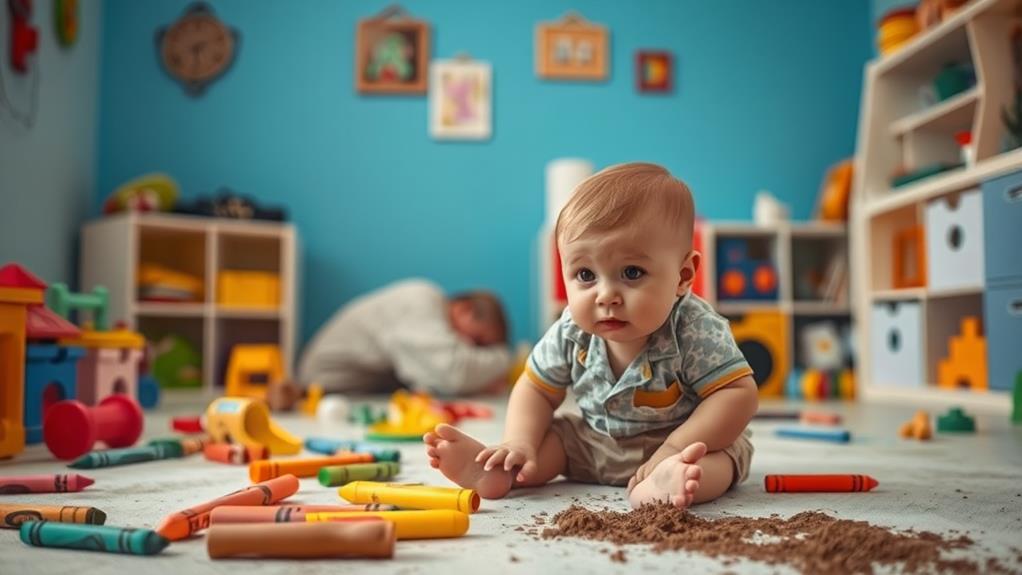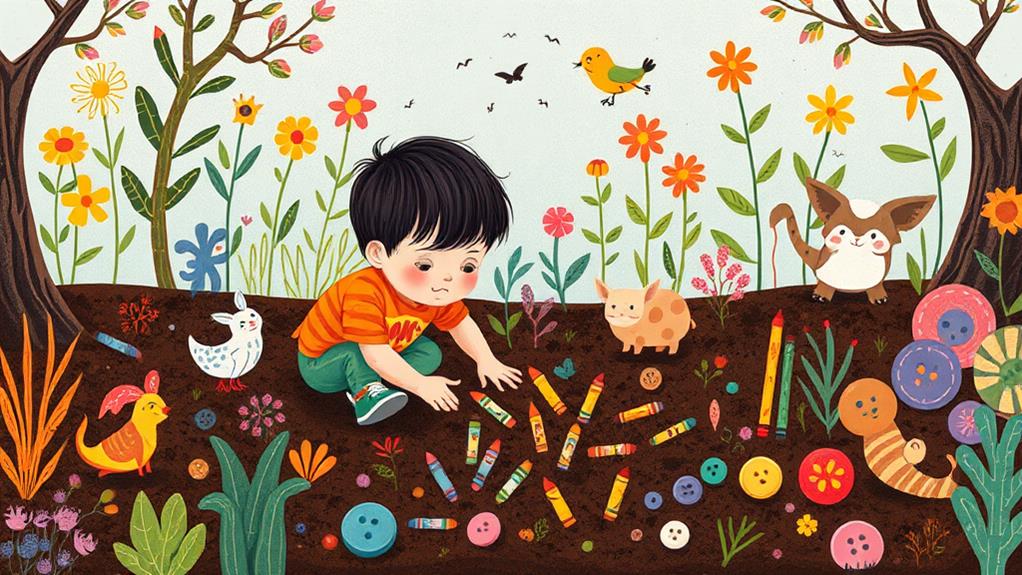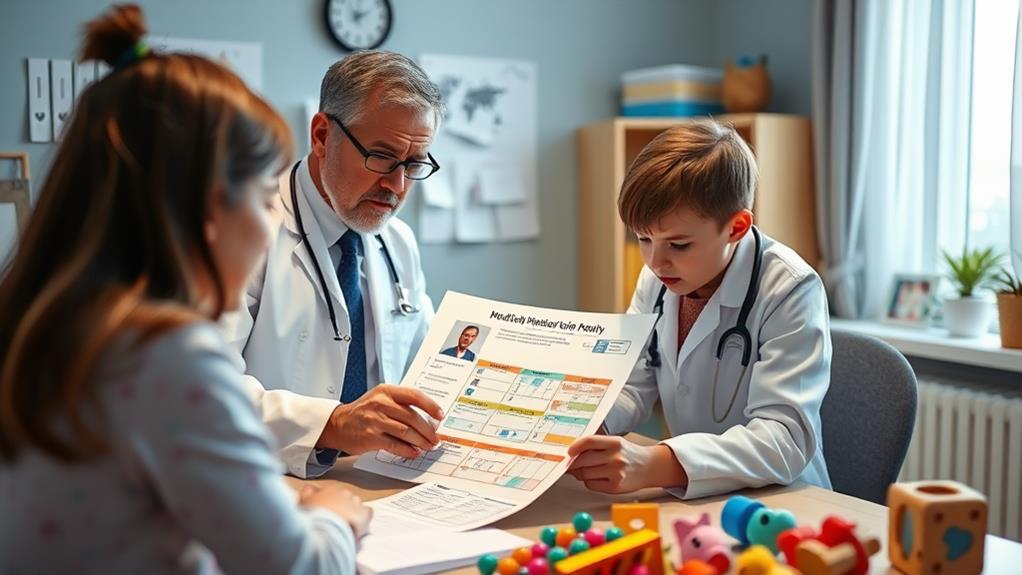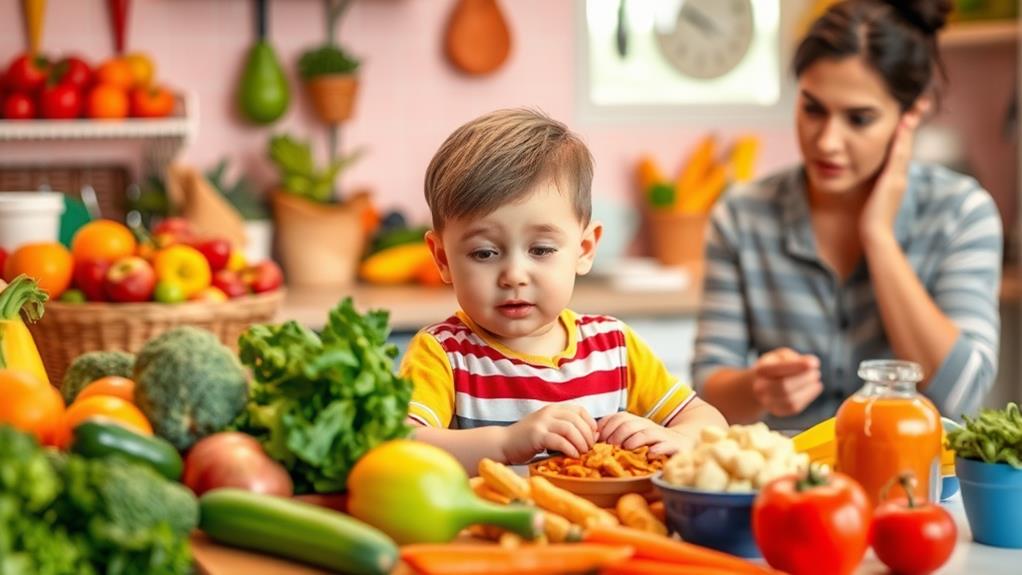If you've noticed your child showing an unusual interest in eating non-food items, it's important to consider the possibility of pica. This disorder isn't just a phase; it can lead to serious health complications if left unaddressed. Recognizing the signs and understanding the underlying risk factors can be pivotal in managing the condition effectively. You might wonder what treatment options are available and how they can help your child regain a healthier relationship with food. The journey toward understanding and addressing pica starts with knowing what to look for.
Understanding Pica

Pica is a concerning eating disorder that affects a significant number of young children, particularly those under six. If you've noticed your little one munching on non-food items like dirt or chalk, don't worry—you're not alone! Studies show that up to one-third of kids in this age group might show pica behaviors.
So, what causes this unusual craving? Well, there are several risk factors for pica. Children with developmental disabilities or those living in stressful homes might be more likely to develop this eating disorder. Nutritional deficiencies, especially a lack of iron or zinc, can also play a role.
It's important to recognize that these behaviors can lead to serious health issues, like stomach blockages or not getting enough of the nutrients they need.
If you're concerned, it's crucial to seek a proper diagnosis. Treatment for pica often includes addressing any nutritional shortages, using behavioral therapy to help your child stop eating non-food items, and providing support for families.
With the right help, your child can learn to enjoy tasty, nutritious foods instead of strange snacks!
Signs and Symptoms
One of the most telling signs of this eating disorder is the persistent consumption of non-food items, which can last for at least a month. If you notice your child munching on things like dirt, chalk, or even paint chips, it's a big red flag!
These behaviors aren't just quirky; they can lead to serious health problems.
The symptoms of pica often include tummy troubles like belly pain, nausea, or bloating. This can happen if the non-food items cause blockages in their digestive system.
You might also see signs of fatigue or behavioral issues in your child, especially if they're facing nutritional deficiencies. For instance, a lack of iron or zinc can make children more likely to develop pica.
If your child is struggling with pica, it's essential to keep an eye out for these signs and symptoms.
Remember, it's not just a phase; it can affect their growth and happiness.
Causes of Pica

Psychological factors also play a role. Stress, childhood adversity, and neglect can contribute to pica behaviors.
If your little one is feeling overwhelmed or anxious, they might seek comfort in unusual ways, like eating things that aren't food.
Cultural practices can influence pica too. In some communities, certain beliefs or traditions might lead to higher rates of pica behaviors, particularly among Hispanic and African American women.
Understanding these causes can be the first step to helping your child.
Risk Factors
What factors might make a child more susceptible to pica? Well, several things can play a role. For starters, young kids—especially those aged 1 to 6—are more likely to show pica behaviors.
If your child has low iron or zinc levels, they might crave non-food items more than usual. Nutritional deficiencies can lead to some pretty odd eating habits!
Developmental disabilities, like autism or intellectual impairments, can also increase the risk of pica. Kids with these challenges mightn't understand that eating things like dirt or chalk isn't safe.
Plus, socioeconomic factors can contribute too. If a family struggles with poverty or has limited access to nutritious food, the chances of pica may rise.
Don't forget about culture! In some communities, certain practices or beliefs might normalize pica behaviors.
If you're concerned about your child's eating habits, keeping an eye on their lead levels is important, as exposure can be harmful.
If pica becomes a problem, it's good to know there are treatments for pica available. So, stay informed and don't hesitate to ask for help if you need it!
Diagnosis Process

Diagnosing pica involves a careful evaluation of a child's eating behaviors and overall health. If your child is munching on things that aren't food, like dirt or paper, and has been doing so for at least a month, it's time to seek help.
Doctors look at whether this behavior makes sense for your child's age and development. They'll rule out any medical conditions that could explain these unusual eating habits. This might include blood tests to check for nutritional deficiencies, such as iron and zinc levels, and to screen for lead poisoning, which can be a serious concern in children.
Imaging tests, like X-rays, may also be needed to check for any blockages or damage caused by those non-food snacks.
The diagnosis process isn't just about what your child is eating, though. Healthcare providers will consider your child's overall health, developmental history, and any other mental health conditions that might be at play.
Treatment Options
Several effective treatment options are available for managing pica in children. One of the most common methods is behavioral therapy. This helps kids learn to create negative associations with non-food items and encourages them to enjoy healthy foods instead.
Think of it as training your brain to make better choices!
Nutritional counseling is also super important. If your child has deficiencies in minerals like iron and zinc, addressing these can help reduce those pesky cravings for non-food items.
You'd be surprised how much your body influences what you want to eat!
An interprofessional approach is best, meaning you'll want to involve doctors, therapists, and dietitians. They can work together to provide well-rounded care for your child.
Also, family education plays a key role. By learning about pica and its risks, you can better support your child through this journey.
Nutritional Support

Nutritional support plays a vital role in managing pica in children, as addressing any nutrient deficiencies can significantly reduce cravings for non-food items. When kids have pica, they might be missing important nutrients, especially iron and zinc.
That's why nutritional counseling is so important! A registered dietitian can help create a personalized nutrition plan that encourages healthy eating habits. This can lead to fewer cravings for things like dirt or paper and promote overall recovery.
It's like giving your child a secret weapon against pica behaviors! By ensuring they eat a balanced diet rich in essential vitamins and minerals, you can help minimize risks like anemia and poor nutrition.
Plus, many insurance plans cover registered dietitian services, making this support more accessible for families.
Ongoing nutritional education for parents and caregivers is equally crucial. You're not just helping your child; you're also creating a safe eating environment that discourages the consumption of non-food items.
Monitoring and Management
While managing pica in children can be challenging, regular monitoring of their eating behaviors is essential for effective intervention. You'll want to keep a close eye on what your child is munching on, especially if they're consuming non-food items for over a month. This can help you spot any pica behaviors early.
Make sure to remove access to any harmful substances in your home. This simple step can drastically reduce pica behaviors and keep your child safe.
Don't forget to have frequent check-ups with healthcare providers. They'll assess your child's nutritional status and any health issues that might pop up, like deficiencies or tummy troubles.
Behavioral interventions can be super helpful too! You might try using reward systems for eating healthy foods and some gentle negative reinforcement for pica behaviors.
Lastly, educating yourself and your family about nutritional counseling can be a game-changer. It'll help you understand any underlying deficiencies, like iron and zinc, that could be causing those pica urges.
With patience and the right strategies, you can guide your child toward healthier habits and a happier life!
Long-term Outlook

The long-term outlook for children with pica can vary significantly, depending on several factors, including the presence of developmental disorders. For many kids, the long-term prognosis is actually pretty positive. Some children may stop these unusual eating habits on their own within months, especially if there aren't any underlying issues.
However, if your child has developmental disabilities or mental health challenges, pica behaviors might stick around longer, possibly even into their teenage years or adulthood.
The key to helping your child is early intervention. By getting the right support, you can significantly reduce pica behaviors and improve their overall well-being. It's important to diagnose pica early and work with healthcare providers to manage symptoms.
Regular check-ups can help prevent complications, like gastrointestinal blockages or the risk of eating harmful substances.
Keep in mind that studies show up to 30% of children with pica might still have these behaviors beyond childhood. So, ongoing support and education are crucial.
With the right approach, you can help your child lead a healthier, happier life!

